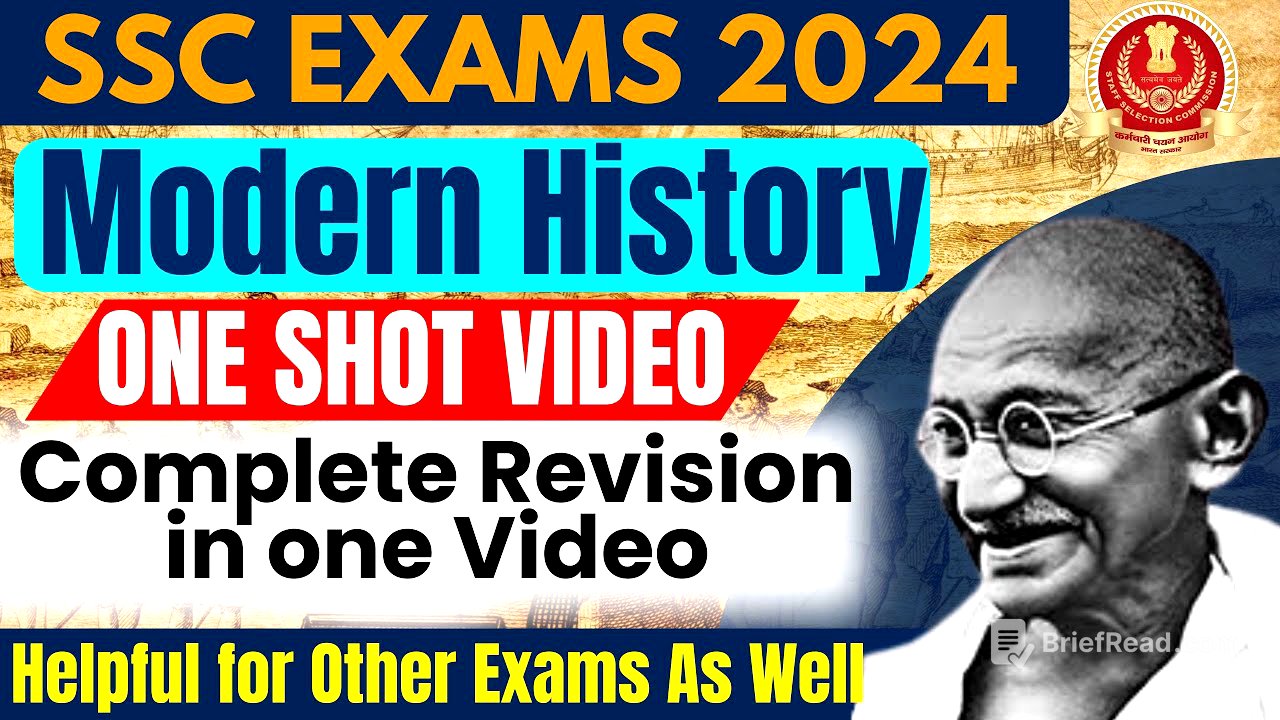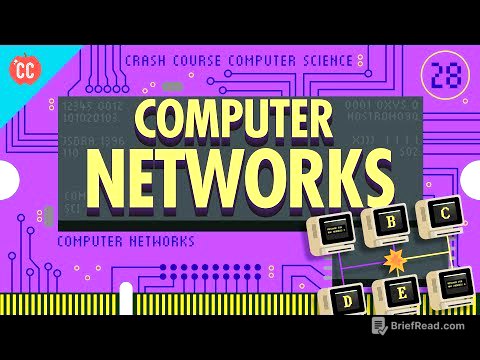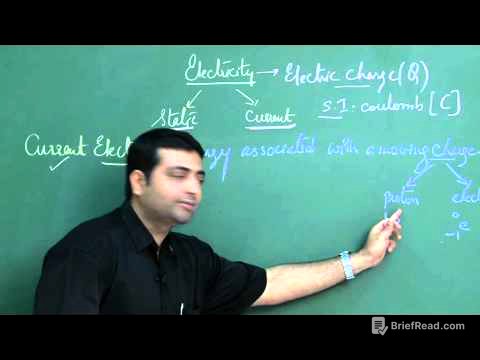TLDR;
This video provides a comprehensive overview of Indian history, focusing on key battles, treaties, and movements that shaped the British Raj and the struggle for independence. It covers the Battle of Plassey, the Anglo-Mysore Wars, the Anglo-Maratha Wars, the Revolt of 1857, and various socio-religious reform movements. It also discusses the emergence of Indian nationalism, the role of key figures like Mahatma Gandhi and Subhash Chandra Bose, and the events leading to the partition of India.
- Battle of Plassey and its significance
- Anglo-Mysore and Anglo-Maratha Wars
- Revolt of 1857 and its aftermath
- Socio-religious reform movements
- Emergence of Indian nationalism and key figures
Battle of Plassey and the Rise of British Influence [0:02]
The Battle of Plassey in 1757 marked the beginning of the British East India Company's rule in India. Bengal, a major economic center, was under the rule of Nawab Ali Vardi Khan, succeeded by Siraj-ud-Daula. Tensions rose due to the company's trade corruption and fortification activities. The Black Hole Tragedy further strained relations, leading to the battle where the British, aided by Mir Jafar's betrayal, defeated Siraj-ud-Daula. Mir Jafar was then installed as the Nawab of Bengal.
Battle of Buxar and the Treaty of Allahabad [3:29]
Mir Jafar's inability to effectively govern led to his replacement by Mir Qasim, his son-in-law. Mir Qasim allied with the Nawab of Awadh, Shuja-ud-Daula, and Mughal Emperor Shah Alam II to fight the British. However, they were defeated in the Battle of Buxar in 1764. The Treaty of Allahabad, orchestrated by Robert Clive, followed, establishing a dual government in Bengal. The British controlled civil rights and tax collection, while the Nawab handled administrative functions.
Anglo-Mysore Wars and the Rise of Hyder Ali and Tipu Sultan [7:09]
The Anglo-Mysore Wars were a series of conflicts between the Kingdom of Mysore and the British East India Company. The Vijayanagara Empire's decline led to the rise of the Wodeyar dynasty in Mysore. Hyder Ali, a soldier in the Wodeyar army, rose to prominence and eventually took control. He and his son, Tipu Sultan, fiercely resisted the British. The First Anglo-Mysore War (1766-1769) resulted in the Treaty of Madras, but tensions continued.
More Anglo-Mysore Wars and the Fall of Tipu Sultan [10:51]
The Second Anglo-Mysore War (1780-1784) saw Hyder Ali's death and was continued by Tipu Sultan, ending with the Treaty of Mangalore. The Third Anglo-Mysore War (1790-1792) resulted in Tipu's defeat and significant territorial losses. The Fourth Anglo-Mysore War (1799) led to Tipu Sultan's death and the installation of a puppet ruler, with Mysore subjected to a subsidiary alliance.
Anglo-Maratha Wars and the Establishment of British Supremacy [14:52]
The Anglo-Maratha Wars were a series of conflicts between the Maratha Empire and the British East India Company. The First Anglo-Maratha War (1775-1782) ended with the Treaty of Salbai. The Second Anglo-Maratha War (1803-1805) concluded with the Treaty of Bassein. The Third Anglo-Maratha War (1817-1819) resulted in the dissolution of the Maratha Empire, with treaties signed with individual Maratha leaders.
Subsidiary Alliance: A Tool for British Expansion [17:34]
The Subsidiary Alliance, introduced by Lord Wellesley, was a system where Indian rulers sought British protection in exchange for maintaining British troops in their territory and accepting British influence in their foreign affairs. The Nizam of Hyderabad was the first to sign in 1798, followed by Mysore and Awadh. This system effectively made these states subsidiaries of the British.
Doctrine of Lapse and Other Policies of British Expansion [21:44]
The Doctrine of Lapse, implemented by Lord Dalhousie in 1848, allowed the British to annex any kingdom without a natural heir. Satara was the first state to be annexed, followed by Sambalpur, Jhansi and others. Dalhousie also introduced postal stamps and the first train service in India.
Pre-1857 Revolts and the Economic, Political, and Military Causes of the Revolt [23:43]
Several revolts preceded the 1857 uprising, including the Sanyasi revolt, Paika Rebellion, and Indigo Revolt. The 1857 revolt was fueled by economic, political, military, and religious grievances. The immediate cause was the use of greased cartridges, which offended both Hindu and Muslim soldiers.
The Revolt of 1857: Key Leaders and Locations [27:58]
The Revolt of 1857 was led by various figures in different regions, including General Bakht Khan and Bahadur Shah Zafar in Delhi, Nana Saheb and Tantia Tope in Kanpur, Rani Lakshmibai in Jhansi, and Kunwar Singh in Bihar. The revolt was ultimately suppressed due to lack of organization and a unified leadership.
Aftermath of the Revolt of 1857: Shift in Power and Governance [30:04]
The revolt led to the end of the East India Company's rule, with direct control passing to the British Crown. The position of Secretary of State was created to oversee Indian affairs, and the Governor-General was replaced by the Viceroy. Key figures like V.D. Savarkar, R.C. Majumdar, and S.N. Sen offered different perspectives on the nature and significance of the revolt.
Land Revenue Systems Under British Rule [32:17]
Three main land revenue systems were introduced by the British: the Permanent Settlement (Zamindari system) in 1793, the Ryotwari system in 1820, and the Mahalwari system in 1822. These systems varied in their approach to revenue collection and had significant impacts on Indian agriculture and society.
Pre-Congress Organizations and the Formation of the Indian National Congress [35:23]
Several organizations preceded the formation of the Indian National Congress, including the East India Association, Indian League, and Bombay Presidency Association. The Indian National Congress was founded in 1885 by Allan Octavian Hume, with key figures like Surendranath Banerjee and Dadabhai Naoroji. The first session was held in Bombay and presided over by Womesh Chandra Bonnerjee.
Theories on the Formation of Congress and Important Early Sessions [38:53]
Theories surrounding the formation of Congress include the Safety Valve theory, the Lightning Conductor Theory. Early sessions of Congress were crucial in shaping the national movement. The Benares session in 1905, presided over by Gopal Krishna Gokhale, and the Calcutta session in 1906, presided over by Dadabhai Naoroji, were particularly significant.
Partition of Bengal: Causes and Consequences [42:27]
The partition of Bengal in 1905 was a strategic move by the British to divide the region along religious lines. The announcement was made in July 1905 and enforced in October 1905. The partition led to widespread protests and the Swadeshi movement, with leaders like Bal Gangadhar Tilak, Syed Haider Raza, and V.O. Chidambaram Pillai leading the charge in different regions.
Swadeshi Movement and the Surat Split [46:11]
The Swadeshi movement saw the rise of Vande Mataram as a theme song and the promotion of indigenous industries. The movement also led to a split within the Congress at the Surat session in 1907, with moderates and extremists clashing over leadership and strategies.
Muslim League Formation and the Annulment of the Partition of Bengal [51:57]
The Muslim League was formed in Dhaka in 1906, with Nawab Salimullah and Aga Khan as key figures. The partition of Bengal was finally annulled in 1911 during the Third Delhi Durbar, and the capital was shifted from Calcutta to Delhi in 1912.
Morley-Minto Reforms and Revolutionary Activities [53:40]
The Morley-Minto Reforms of 1909 introduced separate electorates for Muslims and increased the number of elected members in legislative councils. Revolutionary activities were carried out by groups like the Anushilan Samiti and individuals like Khudiram Bose and Prafulla Chaki.
Revolutionary Activities Abroad and the Ghadar Party [1:02:10]
Revolutionary activities also took place abroad, with Shyamji Krishna Varma founding the India House in London and Virendranath Chattopadhyay forming the Berlin Committee. The Ghadar Party was founded in 1913 by Lala Hardayal and Sohan Singh Bhakna, with its headquarters in San Francisco.
Home Rule League and the Lucknow Session of Congress [1:06:15]
The Home Rule League was formed in 1916 by Bal Gangadhar Tilak and Annie Besant to advocate for self-government. The Lucknow session of Congress in 1916 saw the reunion of moderates and extremists and the signing of the Lucknow Pact between the Congress and the Muslim League.
Montagu-Chelmsford Reforms and the Emergence of Gandhi [1:09:53]
The Montagu-Chelmsford Reforms of 1919 introduced dyarchy in the provinces and extended separate electorates. Mahatma Gandhi's emergence on the Indian political scene marked a new phase in the struggle for independence.
Gandhi's Early Activities in South Africa and India [1:14:40]
Gandhi's early activities in South Africa included establishing the Natal Indian Congress and launching the Indian Opinion magazine. After returning to India in 1915, he engaged in movements like the Champaran Satyagraha, Ahmedabad Mill Strike, and Kheda Satyagraha.
Rowlatt Act, Jallianwala Bagh Massacre, and the Khilafat Movement [1:19:05]
The Rowlatt Act of 1919 led to widespread protests, culminating in the Jallianwala Bagh massacre. The Khilafat Movement, led by the Ali brothers, sought to protect the Ottoman Caliphate.
Non-Cooperation Movement and the Chauri Chaura Incident [1:27:36]
The Non-Cooperation Movement was launched in 1920, calling for the boycott of British institutions. The Chauri Chaura incident in 1922 led to Gandhi's decision to call off the movement.
Emergence of Swarajists and the Formation of CPI [1:32:17]
The suspension of the Non-Cooperation Movement led to the emergence of the Swaraj Party in 1923, advocating for entry into legislative councils. The Communist Party of India (CPI) was formed in Tashkent in 1920 and formalized in Kanpur in 1925.
Caste Movements and Revolutionary Activities [1:38:05]
Caste movements like the Self Respect Movement and Vaikom Satyagraha challenged social inequalities. Revolutionary activities included the Kakori train robbery in 1925 and the formation of the Hindustan Socialist Republican Association in 1928.
Saunders Murder and the Central Legislative Assembly Bombing [1:42:07]
Bhagat Singh and his associates murdered Saunders in 1928 to avenge the death of Lala Lajpat Rai. Bhagat Singh and Batukeshwar Dutt threw a bomb in the Central Legislative Assembly in 1929 to protest against unjust laws.
Chittagong Armoury Raid and the Philosophy of the Bomb [1:43:35]
Surya Sen led the Chittagong Armoury Raid in 1930, involving students and female revolutionaries. Bhagwati Charan Vohra wrote the "Philosophy of the Bomb."
Simon Commission and the Nehru Report [1:46:22]
The Simon Commission, formed in 1927, faced opposition due to its all-white composition. In response, the Nehru Report was presented in 1928, outlining proposed constitutional reforms.
Civil Disobedience Movement and the Round Table Conferences [1:49:21]
The Civil Disobedience Movement (CDM) was launched in 1930, with Gandhi's Dandi March as a key event. The Round Table Conferences were held in London to discuss constitutional reforms.
Gandhi-Irwin Pact and the Karachi Resolution [1:57:32]
The Gandhi-Irwin Pact was signed in 1931, leading to the suspension of the CDM and Gandhi's participation in the Second Round Table Conference. The Karachi Resolution of 1931 endorsed the Gandhi-Irwin Pact and reiterated the goal of Poorna Swaraj.
Communal Award and the Poona Pact [2:01:04]
The Communal Award of 1932 proposed separate electorates for depressed classes, leading to Gandhi's fast-unto-death. The Poona Pact was signed between Gandhi and Ambedkar, reserving seats for depressed classes within the general electorate.
Government of India Act 1935 [2:04:58]
The Government of India Act of 1935 proposed an All-India Federation, abolished dyarchy in the provinces, and introduced dyarchy at the center.
Elections and Congress Performance [2:07:06]
Elections were held under the 1935 Act, with the Congress winning a majority in most provinces. The Haripura and Tripuri sessions of Congress saw Subhash Chandra Bose elected as president, leading to ideological clashes with Gandhi and his eventual resignation.
World War II and the Quit India Movement [2:11:14]
India's participation in World War II without Indian consent led to Congress resignations. The August Offer of 1940 was rejected, and the Individual Satyagraha was launched. The Cripps Mission of 1942 also failed, leading to the Quit India Movement.
Quit India Movement and the CR Formula [2:14:08]
The Quit India Movement, launched in 1942, was a leaderless movement with parallel governments set up in various regions. The CR Formula of 1944 attempted to bridge the gap between the Congress and the Muslim League.
Wavell Plan and the Indian National Army [2:17:19]
The Wavell Plan of 1945 aimed to include Indians in the government, but it also failed. The Indian National Army (INA) was formed by Captain Mohan Singh and later led by Subhash Chandra Bose, comprising Indian prisoners of war.
INA Trials and the Cabinet Mission Plan [2:21:58]
The INA trials sparked widespread support for the accused soldiers. The Cabinet Mission Plan of 1946 proposed a grouping of provinces, initially supported by both the Muslim League and the Congress.
Socio-Religious Reform Movements: Brahmo Samaj [2:30:03]
The Brahmo Samaj, founded by Raja Ram Mohan Roy, aimed to reform Indian society by opposing idol worship and advocating for monotheism.
Arya Samaj and Prarthana Samaj [2:33:03]
The Arya Samaj, founded by Swami Dayanand Saraswati, advocated for a return to the Vedas and started the Shuddhi movement. The Prarthana Samaj, founded by Atmaram Pandurang, also promoted monotheism and opposed idol worship.
Ramakrishna Mission and Other Reform Movements [2:35:27]
The Ramakrishna Mission, founded by Swami Vivekananda, promoted spiritual and social upliftment. Other reform movements included the Dev Samaj and the Seva Sadan.
Widow Remarriage Act and Temple Entry Movement [2:39:18]
Ishwar Chandra Vidyasagar played a key role in the passage of the Widow Remarriage Act. The temple entry movement, led by figures like T.K. Madhavan and Shri Narayana Guru, sought to allow Dalits into temples.
Indian Social Conference and Theosophical Society [2:41:30]
The Indian Social Conference, founded by M.G. Ranade and Raghunath Rao, advocated against child marriage. The Theosophical Society, founded by H.P. Blavatsky and M.S. Olcott, promoted Hindu philosophy and shifted its headquarters to Madras.
Education Commissions and Hindu Colleges [2:43:55]
Education commissions like the Macaulay Minute and Wood's Dispatch shaped the education system in India. The Hindu College at Banaras was set up in 1791, while the Hindu College at Kolkata was founded by Raja Ram Mohan Roy in 1817.
Other Important Points: Satyashodhak Samaj, Bal Gangadhar Tilak's Newspapers, and Carnatic Wars [2:51:30]
Jyotiba Phule founded the Satyashodhak Samaj. Bal Gangadhar Tilak published newspapers like Maratha and Kesari. The Carnatic Wars were a series of conflicts between the British and French in India.









